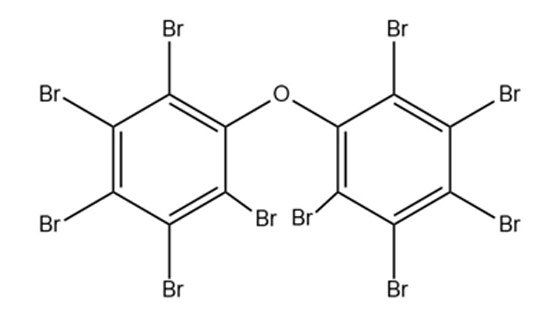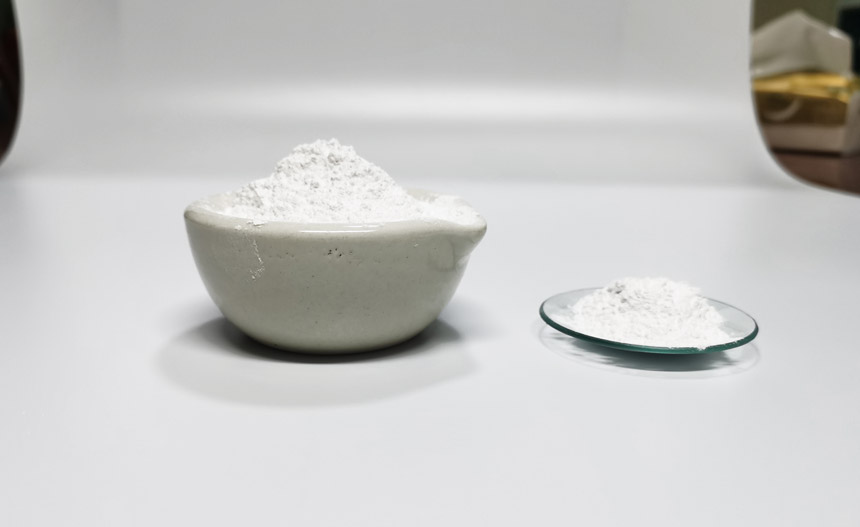Product Name: Decabromodiphenyl Ether (DBDPO)
CAS NO.:1163-19-5
Water solubility: insoluble in water
Appearance: white or light yellow powder
EINECS: 214-604-9
Chemical formula: C12Br10O
Molecular weight: 959.168
Melting point: 304 to 309 ℃
Boiling point: 425 ℃
Other name:
2,3,4,5,6-Pentabromo-1-(2,3,4,5,6-pentabromophenoxy)benzene
6,6′-Oxybis(1,2,3,4,5-pentabromobenzene)
Decabromodiphenyl oxide (DBDPO)
Bis(pentabromophenyl) ether
Decabromodiphenyl ether (DBDPO) is a additive flame retardant compound. Decabromodiphenyl ether belongs to the class of brominated flame retardants (BFRs). DBDPO is also a high-efficiency, broad-spectrum, additive flame retardant. It's noncorrosive, insoluble in water, ethanol, acetone, benzene and other solvents, slightly soluble in chlorinated aromatic hydrocarbons and has good stability. Widely used in rubber, plastics, fibres, textiles, electronics and other materials.
Chemical structure:
As an additive flame retardant, Decabromodiphenyl ether DBDPO plays an important role in polymer materials.
The material consists of ten bromine atoms attached to the diphenyl ether backbone, with a molecular formula of C12Br10O. This structure provides the material with a high level of flame retardancy.

Flame retardant mechanism:
The flame retardant decabromodiphenyl ether DBDPO is a highly efficient flame retardant, which mainly achieves the purpose of flame retardancy by inhibiting the burning of polymer materials. Its flame retardant mechanism mainly includes two aspects: First, DBDPO, like other brominated flame retardants, releases bromine free radicals when heated. These radicals disrupt the combustion process by interrupting the free radical chain reaction that sustains the fire. Additionally, DBDPO creates a protective carbon layer on the material's surface, shielding the underlying substrate from further thermal degradation.
Advantages and Disadvantages:
Decabromodiphenyl ether DBDPO is a more effective flame retardant than traditional brominated flame retardants. It has better flame retardant properties, thermal stability, requires less material, and is compatible with various polymers and processing technologies.
However, DBDPO, a flame retardant, has some drawbacks. It is not easily dispersed in some polymer materials and can precipitate. Additionally, like other brominated flame retardants, it raises concerns about potential environmental persistence, bioaccumulation, and toxicity to humans and ecosystems. As a result, there is a growing interest in developing safer alternative flame retardants.

Application:
Decabromodiphenyl ether (DBDPO) is a widely used flame retardant due to its excellent properties and compatibility with various materials and manufacturing processes. It is used in industries such as electronics, textiles, and upholstery to enhance fire safety. DBDPO improves the fire performance of building materials, such as insulation and roof membranes, in the construction sector. In the transport sector, it contributes to the fire safety of automotive components and infrastructure.
Especially suitable for (PE) polyethylene, (PP) polypropylene, ABS resin, PBT resin and synthetic materials of rubber and fiber.
Currently, DBDPE is also being used in the market to gradually replace DBDPO.
Decabromodiphenyl ethane (DBDPE) is a new, broad-spectrum, effective and environmentally friendly flame retardant. It has superior heat resistance, light resistance, and resistance to dialysis compared to Decabromodiphenyl Ether(DBDPO). The flame retardancy of the two is basically the same. However, decabromodiphenyl ethane does not pose the same risk of polybrominated dioxins as decabromodiphenyl ether. Additionally, it has lower toxicity.
Whether it is Decabromodiphenyl ethane DBDPE or Decabromodiphenyl Ether DBDPO, they all contain bromine. In the future, the use of brominated flame retardants will gradually decline as environmental awareness increases and technology continues to improve.
More environmentally friendly alternatives have appeared on the market, please feel free to consult iSuoChem.